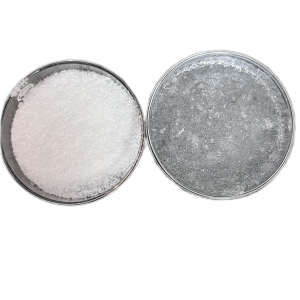Sodium polyacrylate, recognized for its exceptional absorbency, is a polymer commonly found in products like diapers and water-absorbing crystals. Despite its widespread use, questions often arise about its safety and environmental impact. This article aims to address these concerns comprehensively.

Environmental Impact of Sodium Polyacrylate
Is Sodium Polyacrylate Harmful to the Environment?
Sodium polyacrylate itself is not inherently harmful to the environment; however, its impact largely depends on its disposal and usage.
- Degradation: Sodium polyacrylate is not biodegradable and does not decompose quickly in nature, potentially taking 20-30 years to break down. Though it eventually degrades through exposure to light and environmental factors, this process is slow.
- Water and Soil Contamination: Improper disposal can lead to contamination of water bodies and soil. Although non-toxic, excessive amounts can disrupt ecosystems.
- Recycling and Disposal: Proper disposal and recycling are essential to minimize environmental harm. Products containing sodium polyacrylate should be discarded according to local regulations to avoid pollution.
Composition and Production
Is Sodium Polyacrylate Natural?
Sodium polyacrylate is a synthetic polymer, manufactured through industrial processes.
- Chemical Composition: It consists of long chains of acrylate compounds, derived from petroleum-based sources.
- Manufacturing Process: The polymer is created through polymerization, a chemical reaction linking acrylate monomers into large chains, giving it its super absorbent properties.
Safety Considerations
Is Sodium Polyacrylate Safe?
Generally, sodium polyacrylate is considered safe for use in consumer products, with some precautions.
- Non-Toxicity: It is non-toxic, which is why it is widely used in personal care products like diapers and sanitary pads.
- Inhalation and Skin Contact: While direct skin contact is usually safe, inhaling its powder form can irritate the respiratory system. Prolonged skin exposure to large amounts might cause irritation.
- Food Safety: Sodium polyacrylate should not be ingested and is not approved for use in food products due to potential health risks.
Usage in Agriculture
Is Sodium Polyacrylate Safe for Plants?
Sodium polyacrylate can be beneficial for plants, particularly in enhancing soil water retention, but careful usage is important.
- Water Retention: It improves the soil’s ability to retain water, which can be advantageous in agriculture and horticulture, especially in dry regions.
- Soil Structure: By retaining water, it helps keep soil moist for extended periods, promoting plant growth and root development.
- Concentration and Usage: Overuse can lead to waterlogged soil, impeding airflow and potentially harming plant roots. Correct application amounts are crucial to avoid these issues.
Conclusion
Sodium polyacrylate is a versatile polymer offering significant benefits across various applications. While it is safe and non-toxic when used properly, its synthetic nature means it is not biodegradable and requires responsible handling and disposal. When used appropriately, it can enhance soil water retention, aiding plant growth in agricultural settings. For safe disposal methods of sodium polyacrylate materials, contact GELSAP for guidance.

